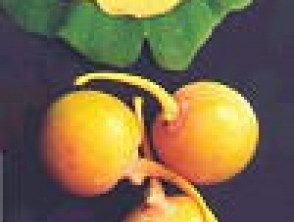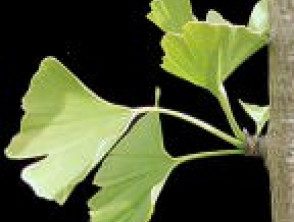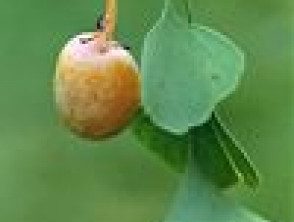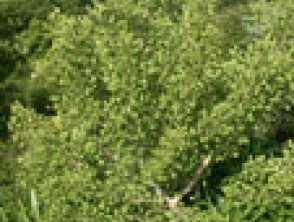| Common name: | Maiden tree (living fossil). |
| Botanical name: | Ginkgo biloba |
| Family: | Ginkgoaceae belong to the Ginkgophytes class. This class formed the link between ferns and angiosperms (flowering plants). |
| Origin: | Ginkgo biloba is the oldest living tree in the world, a species whose existence dates back more than 250 million years! For this reason, Charles Darwin referred to Ginkgo as a living fossil (1859). Ginkgo trees were common and extended in Asia, Europe and America, but it disappeared from America about 7 million years ago, and from Europe about 3 million years ago. |
| Description: | Deciduous conifers. A Ginkgo biloba tree can reach 30 or 40 m in height and a spread of 8 meters. The trunk can be about 3 or 4 meters wide in diameter. It is straight columnar and sparsely branched. Young trees usually have a central trunk, pyramidal in shape, with a regular shape, sideupward asymmetric derivation. The bark is brown and rough. That fissures rough grooves with age. The leaves of this tree are interesting and unique from any other tree. They are fan-shaped, leathery and smooth. They are often deeply grooved in the middle of the leaf, producing two distinct lobes, hence the name Ginkgo biloba (two-lobed). The leaves have a dichotomous open venation pattern; The veins branch in pairs from the base of the leaf and are not crossed. They are bright green during the summer, turning gold before falling in the fall. |



Ginkgo

Ginkgo
| Applications: | Ginkgo nuts have long been considered a delicious food by the Japanese, and have been cooked and served in various ways depending on the weather. Ginnan is the Japanese word for those seeds. The first mentioned medicinal use of Ginkgo biloba appears in China. Ginkgo leaf is first mentioned in Lan Mao's Dian Nan Ben Cao, published in 1436 during the Ming Dynasty. Lan Mao points out external use to treat skin and head sores, as well as freckles. The internal use of the leaves is first noted in Liu Wen-Tai's Ben Cao Pin Hui Jing Yao, an imperial commissioned work recorded in 1505. Liu Wen Tai notes the use of the leaves in the treatment of diarrhea. Ginkgo leaves are known in Chinese medicine as bai-guo-ye. Recent clinical reports in modern China suggest that leaves lower serum cholesterol levels and have some clinical value in angina pectoris pectoris |
| Allergens: | Ginkgolic acid |
| Allergy: |
Allergic contact dermatitis It has been reported particularly to the fruits and nuts of female trees. |
| Cross reactions: | Cross reaction with anarcardaceae species include poison ivy, mango, rhus tree, etc. |
| Other information: | The fruits are often produced in great abundance and become an abscissa soft mess in October, covering the ground with fleshy, strongly malodorous fruits. They then release a very nauseating smell, like a type of rancid butter, due to the presence of butyric acid. Furthermore, as they are viscous, the presence of a large number of eggs on the road or on a pavement can be the origin of accidents. Finally, this pulp contains irritating and allergic substances for certain people; management begins cutaneous Pruritic lesions. In fact, urban landscapers recommend only the male tree. |
| Patch test: | 1 in 10 fruit pulps in acetone. |

